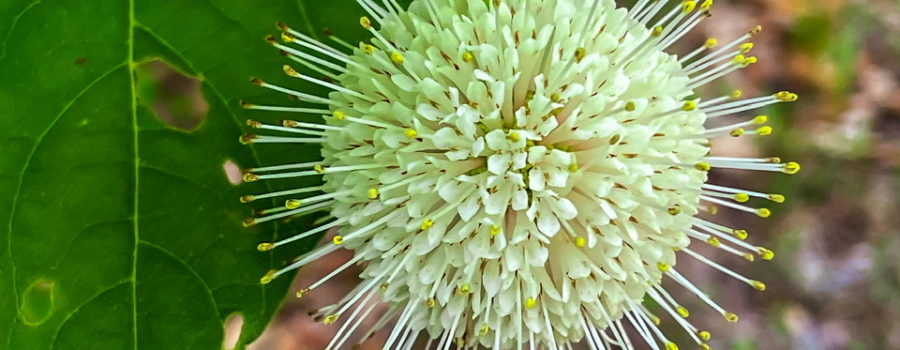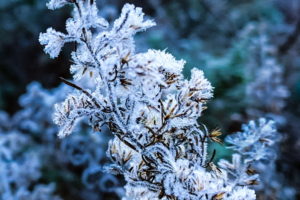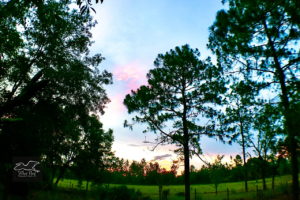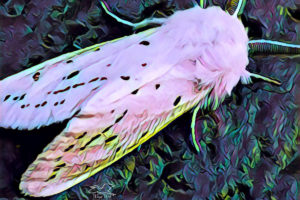Yet Another Useful and Beautiful Find From Henry Beck Park

Back at the end of May, I made an impromptu trip to one of our local public parks, Henry Beck Park. I had an outstanding time and took loads of photos. Part of the reason I found it so interesting was that even though it’s only a few miles from my home, the habitat is completely different. I live in the sandhills, which are high and dry (or at least as high and dry as Florida gets), whereas Henry Beck Park is in a much moister environment with a small stream that runs through it. This small difference and a few miles difference result is very different flora and fauna. One of the many beautiful plants that you can find at Henry Beck is the common buttonbush, also known as button willows or honey balls. It’s a deciduous shrub that can grow to be 8-12 tall and about four feet wide.

There were several buttonbushes growing along the stream at Henry Beck Park. They were not difficult to find because at the time I was there they were covered in their showy white balls of flowers. Not only are the flowers unique looking and quite attractive, but they are also very fragrant. When I was walking near one the sweet aroma was intoxicating, and up close it was almost overpowering. The sweet fragrance and the presence of so many flowers on one bush was an open invitation to all the pollinators in the area. There were some gorgeous swallowtail butterflies and quite a few wasps. There were also several types of bees including honey bees and a couple of two spotted bumble bees. There was also a hummingbird that popped around a couple of times, but it never stayed long enough for me to identify it, let alone get a photo.

The common buttonbush is a native of North America, but like several of our other showy flowering plants, it has been cultivated as an ornamental for use in many other parts of the world. Wild buttonbushes can be found from southern Ontario south to Florida and west into Texas and Oklahoma. It likes to live in a wetland habitat, so it is found in swamps (it’s very common in the Everglades) and bogs, along river and stream beds, and in flood plains. It does not tolerate drought well, and when used in gardens it will need to be watered frequently.

Buttonbush is a great plant to have around for wildlife, too. The leaves are bitter so they are pretty deer resistant, but deer will occasionally browse on them or more commonly on the flowers. The flowers are obviously awesome for pollinators, and some beekeepers plant them as food for their honey bees (hence the name honey balls). They also attract hummingbirds, butterflies, wasps, moths, bats, ants, and several types of flies. In the fall, the balls of white flowers become round clusters of reddish brown nutlets that are a favorite of waterfowl, wild turkeys, towhees, American robins, mockingbirds, and many other seed eating birds. The nutlets usually last throughout the winter, so for some species they are vital to winter survival. When spring comes around, the new green leaves provide food for caterpillars of several types of butterflies and moths including skippers and Sphinx moths. Many bird species including one of my personal favorites, the wood duck, often also use this bush as cover for building their nests and raising their young.

The uses for buttonbush don’t stop with wildlife, either. Native Americans used buttonbush for quite a few remedies. The bark was chewed for relief from toothaches while concoctions made from the leaves were used for an eye wash, as an anti inflammatory, for headaches, for fevers, as an antidiarrheal, and for treatment of jaundice. Like so many other medicinal plants, buttonbush leaves contain a toxin, cephalathin, that if used incorrectly will cause vomiting, diarrhea, seizures, and paralysis. For this reason, and the fact that more effective remedies now exist, buttonbush is rarely if ever used medicinally any more. Still overall, buttonbush is a pretty incredible plant when you look at all of it’s uses and it great beauty!

If you enjoy beautiful nature photography and artwork, please consider subscribing to our blog and newsletter!





Recent Comments